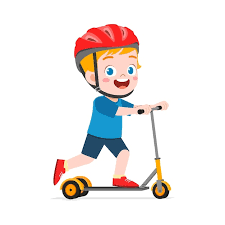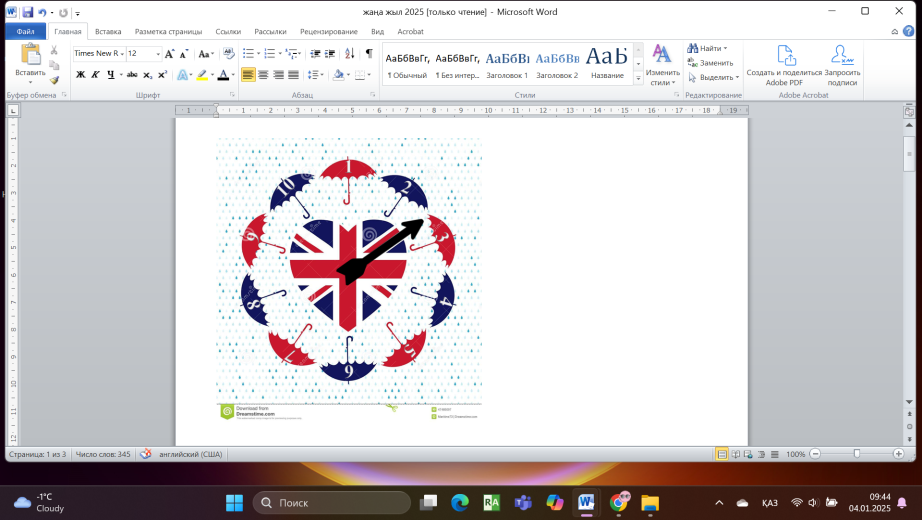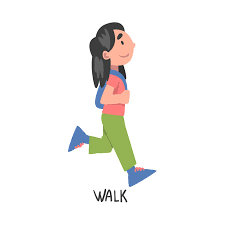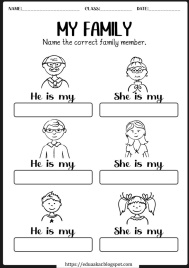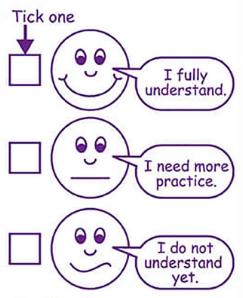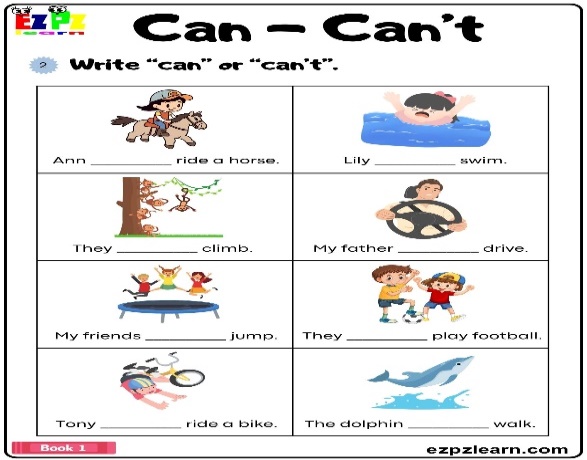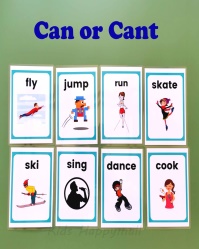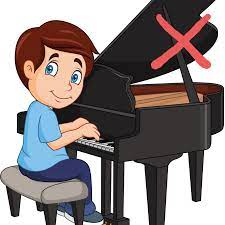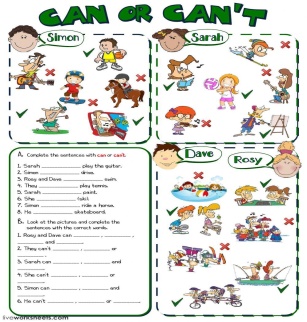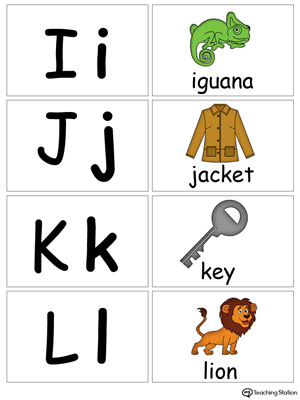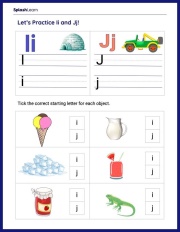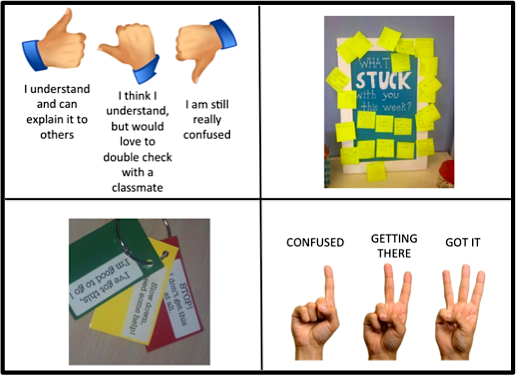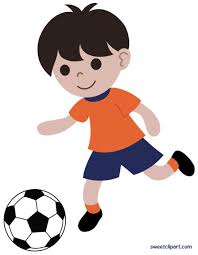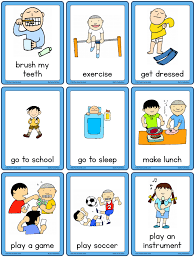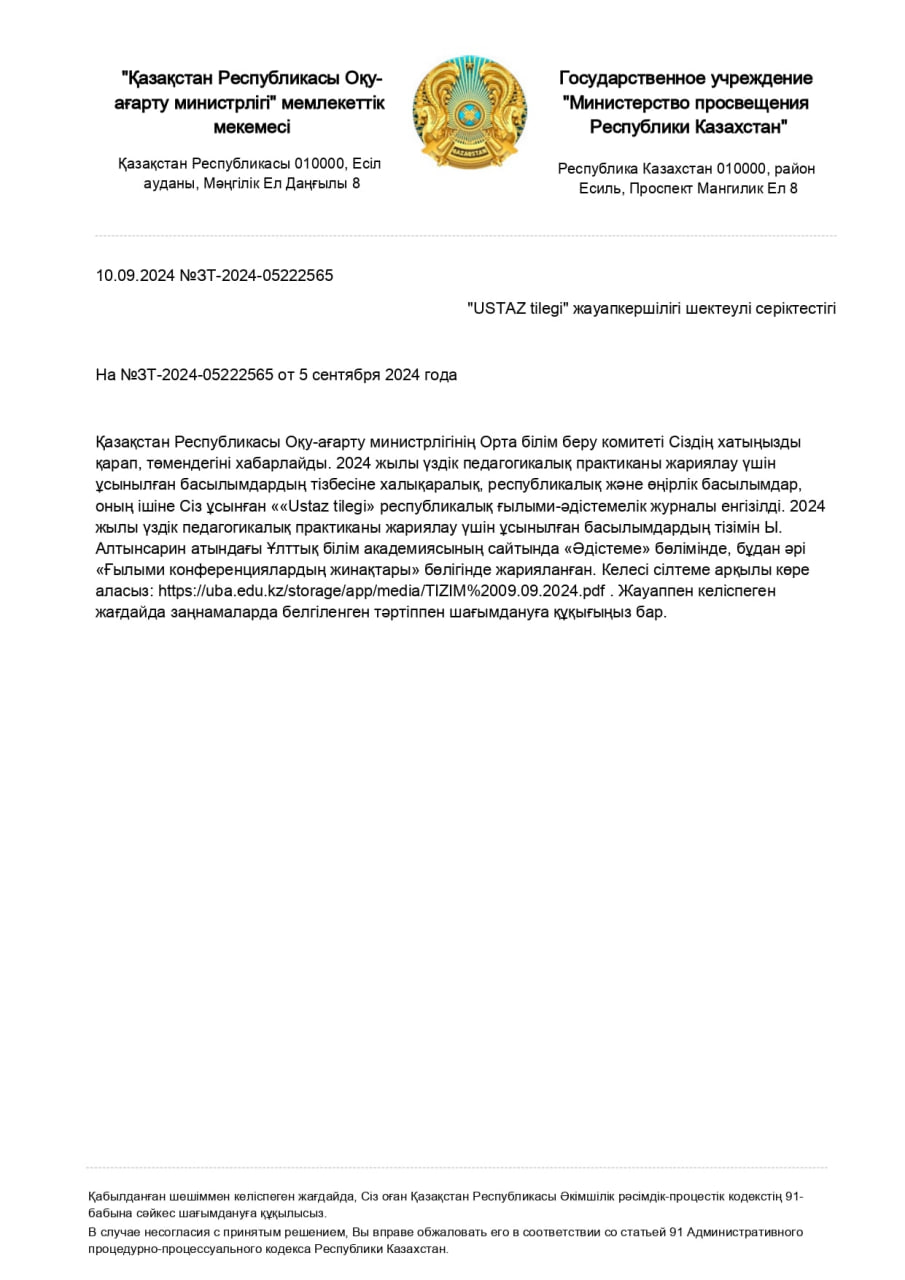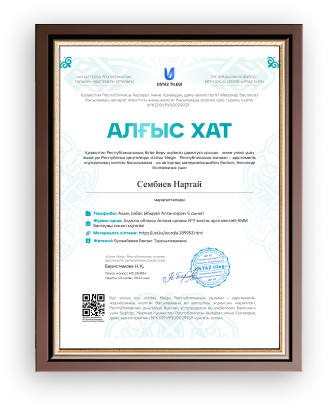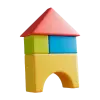
Short term plan
|
Unit: Unit 5. My free time |
Lesson 33 |
||
|
School: |
|
||
|
Teacher’s name: |
|
||
|
Date: |
|
||
|
Grade: 3 |
Number present: |
absent: |
|
|
Lesson title |
A story with action words. |
||
|
Learning objectives |
3.1.2.1 recognise familiar words with visual support; 3.2.2.1 use isolated words and basic expressions to provide personal information; 3.2.3.1 respond to basic questions with single words or short responses; 3.3.1.2 identify and read separate sounds (phonemes) within words, which may be represented by more than one letter; |
||
|
Lesson objectives (assessment criteria) |
Learners will be able to: - learn how to ask questions with can using action verbs; make short dialogues on the topic; express personal attitude toward a topic discussing a topic. |
||
|
Values and its purpose: |
"Law and Order" Know the basics of the legal system and human rights |
||
|
Stages/ Time |
Teachers actions |
Students actions |
Assessment |
Resources |
|
Beginning of the lesson 5 min |
Organization moment : 1.Greeting. . (Whale class, Individually) Warm-up Phonetic Drill Exercise. A teacher asks Sts. to listen to the song and guess the theme of the lesson. What verb can you hear? A teacher shows Sts. a flashcard and asks a question: Can you run? A teacher can use a mime to help children to understand. Active words: run, fly, walk, talk, ride a bike, ride a scooter. Lead – In
|
Greet the teacher and classmates. Introduce themselves in pairs. Sts. listen to the song and name a topic of the lesson. https://youtu.be/YywiAe4kWJ4 Sts. name a verb and make up sentences with a modal verb can. Sts. answer: Yes/ No and give a full sentence. |
Teacher controles the process, gives feedback and asks additional questions if it’s nessasery. Teacher evaluate pupils with phrases like: “Good job! Well done!” Formative Assessment
|
|
|
Middle of the lesson Presentation part. 35 min |
Task. I Ex:1 P:32 Ask children to look at the pictures of the actions. Play the first part of the recording for children to listen and point to the pictures. Play the second part for children to repeat the words Play the recording all the way through again for children to listen and point and then repeat the words. Hold up flashcards 91-96 for individual children to say the words. |
Learners look at the pictures of the actions and listen and point to the pictures. Transcript run, fly, walk, talk, ride a bike, ride a scooter walk, run, ride a scooter, talk, ride a bike, fly Listen and repeat. run, fly, walk, talk, ride a bike, ride a scooter |
T’s feedback Descriptor: - look at the family members - match descriptions to pictures Point 2
|
Free time activity flashcards
|
|
|
Task. II Ex: 2 P: 32 Play the recording for children to listen to the chant. Play it a second time for children to say the words. Repeat. Play Simon says... (see Teacher's Book page 88). Give the instructions (Simon says) run/fly/walk/talk/ride a bike/ ride a scooter for children to mime the actions. |
Learners listen to the chant and say the words. Transcript run, run, run fly, fly, fly walk, walk, walk talk, talk, talk ride a bike, ride a bike, ride a bike ride a scooter, ride a scooter, ride a scoote |
Self -assessment Descriptor: - listen to the chant. - add actions for each family Point 2 |
https://wordwall.net/ru/resource/1624332 |
|
|
Task. III Ex: 3 P: 32 Use Story poster 5 to present the story. Ask questions, e.g. What has Billy got? Focus attention on each frame. Ask children to name as many things as they can. Ask Who's in the living room? Where's Tim/Rosy? What's he/she doing? What's happening? Ask children to look at the poster while you play the recording. Point to each speech bubble as you hear the text. Ask comprehension questions, e.g. Can Action Boy run/ fly/walk/talk? Ask children to open their Pupil's Books and follow the story as you play the recording again. Ask children to find and point to the words from Exercise 1 that appear in the story |
Learners look at the poster while you play the recording. Point to each speech bubble as you hear the text
|
Descriptor: - listen to the recording - answer the question |
Worksheet
|
|
|
||||
|
End of the lesson 5 min |
Briefly ask students what they learned today (greetings, names of characters, introducing themselves). Ex: P: Home task: |
Pupils evaluate themselves using evaluation lists. Reflection. Self- Assessment.
|
Poster Success
|
|
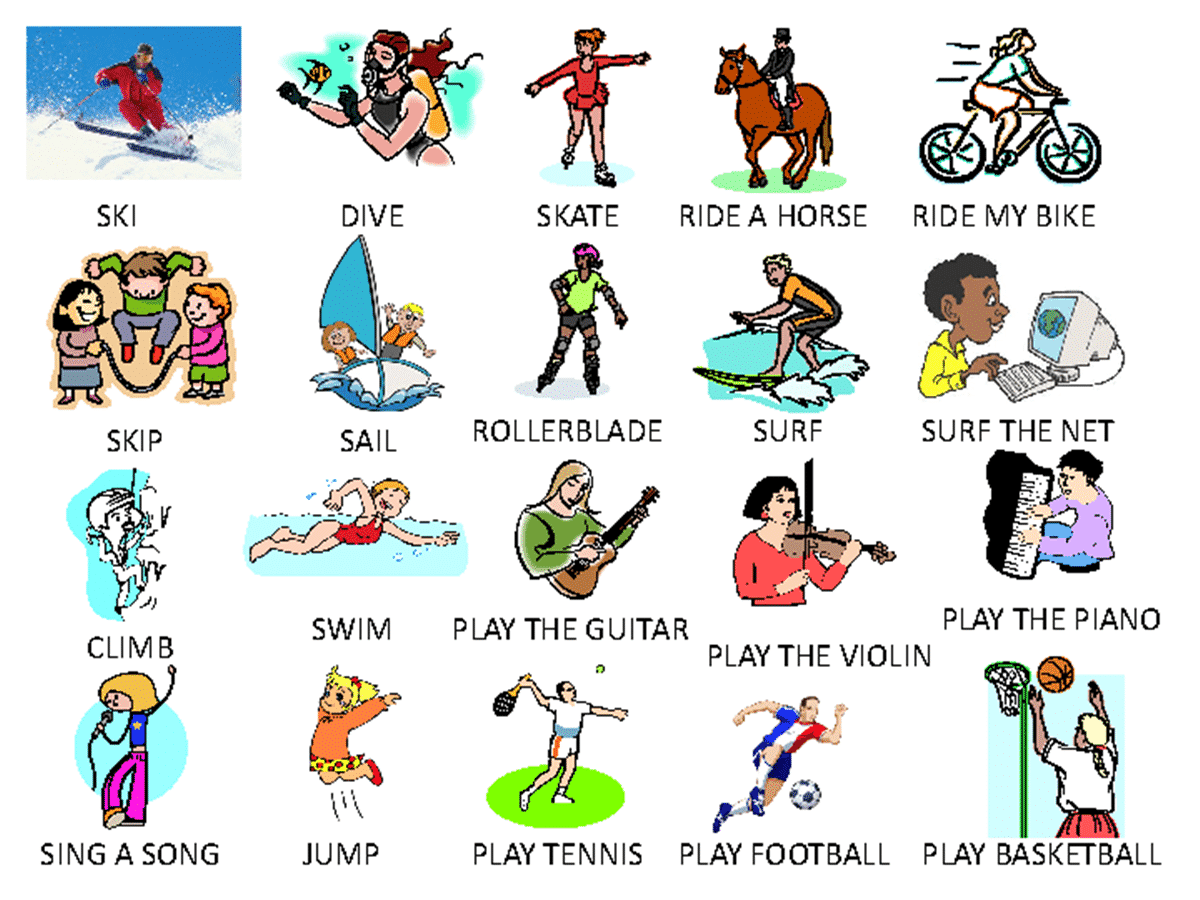
Show a right activity: I can ride a bike, can skate, can play the guitar
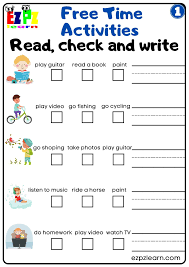
Short term plan
|
Unit: 5. My free time |
Lesson 34 |
||
|
School: |
|
||
|
Teacher’s name: |
|
||
|
Date: |
|
||
|
Grade: 3 |
Number present: |
absent: |
|
|
Lesson title |
Talking about ability |
||
|
Learning objectives |
3.1.4.1 understand basic personal questions; 3.2.3.1 respond to basic questions with single words or short responses; 3.3.3.2 find out the main points in short simple descriptions with visual support; 3.5.1.13 use can/ can’t to describe ability. |
||
|
Lesson objectives (assessment criteria) |
Learners will be able to: to learn how to talk about ability; to make short dialogues on the topic; to write familiar words correctly and make sentences with them; to express personal attitude toward a topic discussing a topic. |
||
|
Values and its purpose: |
"Law and Order" Observance of norms and rules of order and justice understand the need |
||
|
Stages/ Time |
Teachers actions |
Students actions |
Assessment |
Resources |
|
Beginning of the lesson 5 min |
Organization moment : 1.Greeting. . (Whale class, Individually) Warm-up Phonetic Drill Exercise. She sells seashells at the seashore. Repeat: sh, she, short, shirt; S, skirt, small, sea. Name words with a sound: sh/ ch Lead – In Hold up Story poster 5 and ask children what happened in the story. Put down the poster and ask children which actions Billy talked about in the story.
|
Learners identify characters and potentially share details from the previous lesson. Sts. do the task in pairs. Answers: Ann can ride a horse. Lily can’t swim. They can climb a tree. My father can drive. My friends can jump. The boys can play football. Tony can’t ride a bike. The dolphins can’t walk. |
Teacher controles the process, gives feedback and asks additional questions if it’s nessasery. Teacher evaluate pupils with phrases like: “Good job! Well done!” Formative Assessment
|
Flashcards
|
|
Middle of the lesson Presentation part. 35 min |
Task. I Ex:1 P: 33 Ask children to look at the story on Pupil's Book page 38. They check how many of the actions they remembered in the lead-in activity. Play the recording, pausing for children to repeat. Divide the class into groups of four to play Billy, Uncle, Tim, and Rosy. Ask children actions for the story (see suggestions the parts of to decide on the below). Children act out the story |
Learners look at the story and check how many of the actions they remembered in the lead-in activity Picture 1: Billy moves Action (Use a pencil or a pencil case for Action Boy.) Uncle waves hello at Action Boy. Picture 2: Billy throws Action Boy in the air. Tim kicks a footpall. Picture 3: Billy moves Action Boy from side to side to make НЕ him walk. Rosy writes with a pen. Picture 4: Rosy talks to Action Boy. Billy laughs. |
Descriptor: - look at the story - check how many of the actions they remembered
|
|
|
|
Task II Ex: 2 P: 33 Look at each picture in the Let's learn! box and ask children what they can see. Copy the sentences and questions from the box onto the board, leaving spaces where the action words are. Put flashcards in the spaces to elicit sentences and questions with the same pattern, e.g. He can swim. He can't fly. Can he climb? Children repeat the sentences chorally. Ask children to look at the pictures in their Pupil's Books. Ask different children to say each sentence. |
Pupils look at each picture in the Let's learn! Copy the sentences and questions from the box onto the board. ANSWERS |
T’s feedback Descriptor: - look at each picture - copy the sentences and questions Total: 1 point
|
|
|
|
Task. III Ex: 3 P: 33 Draw children's attention to the pictures. Read each word aloud for children to repeat chorally. Pair up children. Ask them to close their books. Explain that they will take turns to mime each word for their partner to guess. Do an example with the class e.g. mime putting on knee pads for children to call out the word. |
Learners read each word aloud for children to repeat chorally. |
Self -assessment Descriptor: - read each word aloud - repeat chorally. Point 2 |
https://wordwall.net/ru/resource/3443166 |
|
|
Task. IV Ex: 4 P: 33 Draw children's attention to the Let's learn! box and read the sentences aloud for children to repeat. Write them on the board and underline the verbs wear and don't use. Explain that when we express rules we start the sentence with a verb in the affirmative or negative form to tell us what to do or not to do. Provide more examples, e.g sit down, listen to the teacher, don't talk, don't run. |
Learners read the sentences aloud for children to repeat. Write them on the board and underline the verbs wear and don't use ANSWERS 1 He can ride a bike. 2 He can't fly. 3 He can ride a scooter. 4 She can't talk on the cellphone. |
Descriptor: - read the sentences - underline the verbs wear and don't use Point 2 |
|
|
|
||||
|
End of the lesson 5 min |
Encourage students to practice writing their names and greeting their families in English. |
Pupils evaluate themselves using evaluation lists. Reflection. Self- Assessment.
|
Poster Success
|
|
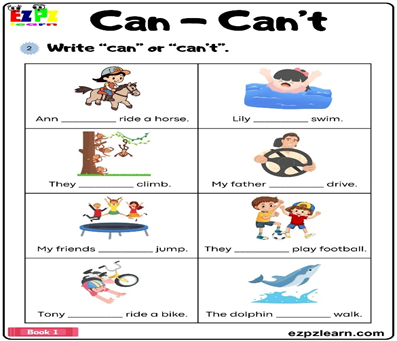
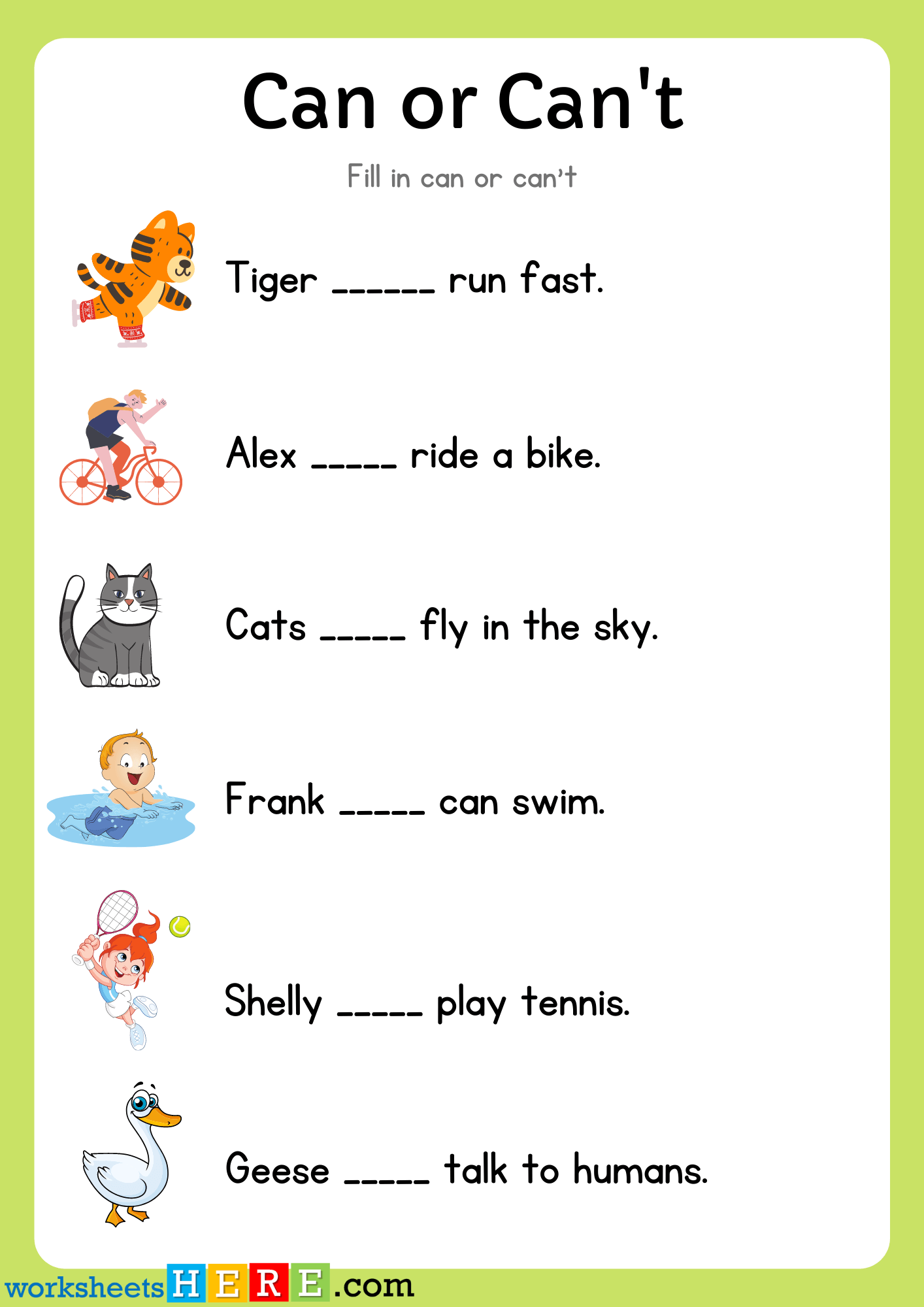
Short term plan
|
Unit 5. My free time |
Lesson 35 |
||
|
School: |
|
||
|
Teacher’s name: |
|
||
|
Date: |
|
||
|
Grade: 3 |
Number present: |
absent: |
|
|
Lesson title |
Things I can do |
||
|
Learning objectives |
3.1.4.2 understand simple descriptions of people, actions, and objects with visual support; 3.2.2.1 use isolated words and basic expressions to provide personal information; 3.3.3.2 find out the main points in short simple descriptions with visual support; 3.5.1.13 use can/ can’t to describe ability. |
||
|
Lesson objectives (assessment criteria) |
Learners will be able to: to learn how to ask and answer questions with can; to use verbs in the context of a song; to write familiar words correctly and make sentences with them; to express personal attitude toward a topic discussing a topic. |
||
|
Values and its purpose: |
"Law and Order" Ensuring the protection and safety of society understand the importance of law and order as |
||
|
Stages/ Time |
Teachers actions |
Students actions |
Assessment |
Resources |
|
Beginning of the lesson 5 min |
Organization moment : 1.Greeting. . (Whale class, Individually) Warm-up Phonetic Drill Exercise. Repeat: they, the, this, that, there, there is, there are. Read the words: this, that, three, mother Name words with a sound: [d], [f], [ei]. Lead – In
|
Learners work in pairs. One pupil thinks of a free time activity and the other pupil tries to guess the activity. Watch the video and remember and recognize the main vocabulary. |
Teacher controles the process, gives feedback and asks additional questions if it’s nessasery. Teacher evaluate pupils with phrases like: “Good job! Well done!” Formative Assessment |
|
|
Middle of the lesson Presentation part. 35 min |
Task. I Ex: 1 P: 34 Ask children to look at the actions. Play the first recording for children to point to the pictures. part of the Play the second part for children to repeat the words. Play the recording all the way through again for children to listen and point and then repeat. |
Learners look at the actions. Listen and point and then repeat. Transcript Listen and point. write, draw, sing, dance, cook dance, sing, cook, write, draw Listen and repeat. write, draw, sing, dance, cook |
T’s feedback Descriptor: - look at the actions - listen, point, and repeat Total: 1 point |
Flashcards
|
|
|
Task II Ex: 2 P: 34 Ask children to look at the pictures. Point to the different actions for them to name them. Play the song for children to point to the pictures when they hear the new words. Then play it again as they follow the words in their Pupil's Books. Recite the words of the song with the class, without the recording. Say each line and ask children to repeat. Play the song again for children to sing. |
Learners look at the pictures. Point to the different actions for them to name them.
|
T’s feedback Self assessment Descriptor: - look at the pictures - name the actions Total: 1 point
|
|
|
|
Task. III Ex:3 P:34 Ask children to look at the pictures and decide what the actions are (see suggestions below). Practise the actions with the class. Play the song for children to sing and do the actions. Write these lines from the song on the board: I can write... I can draw... I can sing Ask children to think of different endings for these lines. Play the song again. Children sing their new version of the song. |
Pupils look at the pictures and decide what the actions are Song actions I can write: Write the letter 'a' in the air. I can draw an elephant: Draw an elephant's trunk. I can sing this song: Point to mouth. I can do anything: Outstretch arms |
Self -assessment Descriptor: - look at the pictures - sing and do the actions. Total: 1 point
|
Worksheets
|
|
|
||||
|
End of the lesson 5 min |
Briefly ask students what they learned about emotions today. |
Pupils evaluate themselves using evaluation lists. Reflection. Self- Assessment.
|
Poster Success
|
|
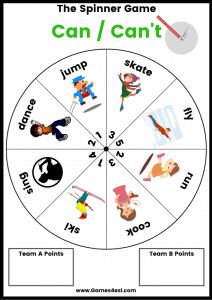
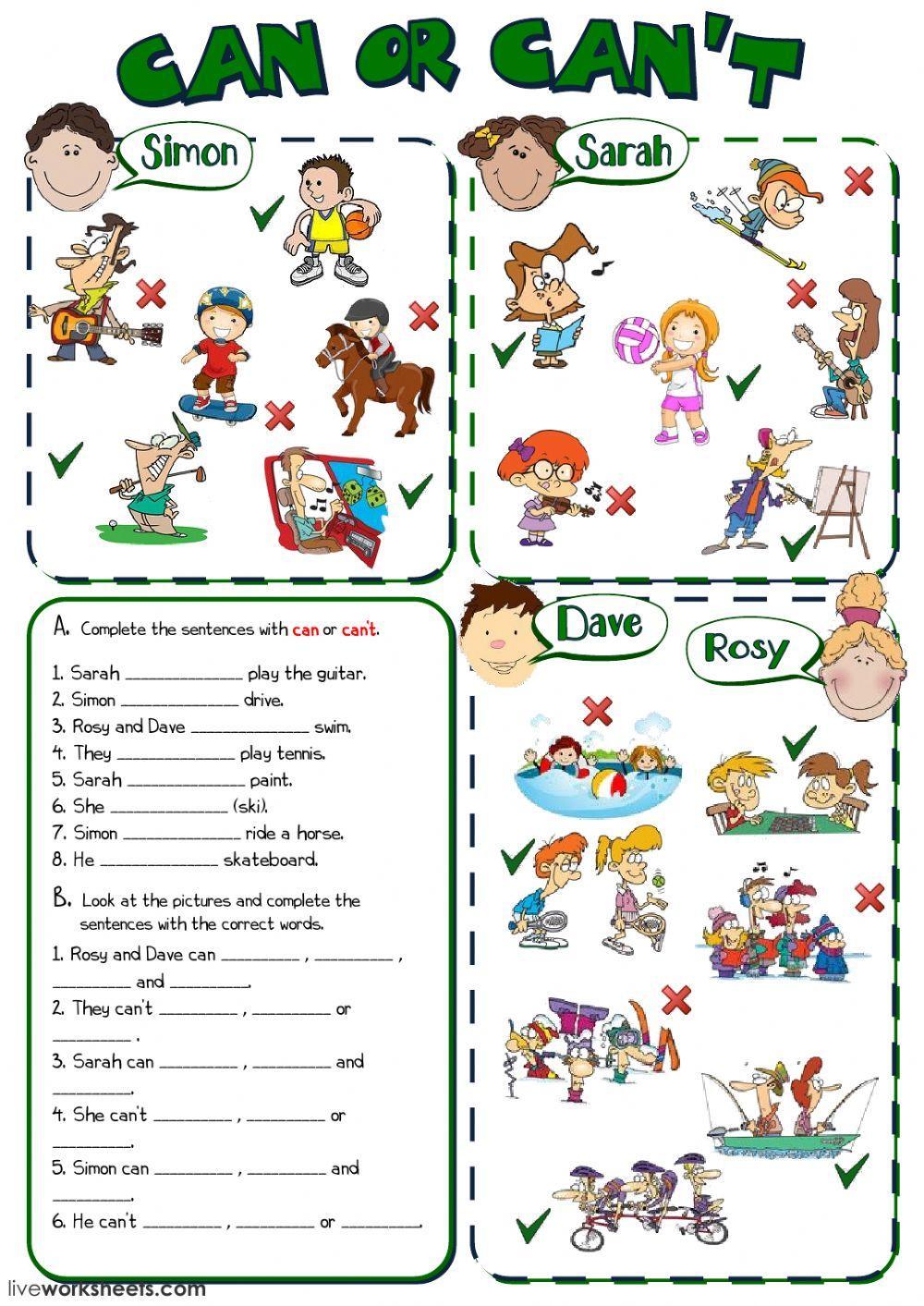
Short term plan
|
Unit: 5. My free time |
Lesson 36 |
||
|
School: |
|
||
|
Teacher’s name: |
|
||
|
Date: |
|
||
|
Grade: 3 |
Number present: |
absent: |
|
|
Lesson title |
Phonics |
||
|
Learning objectives |
3.1.1.1 recognise the sounds of phonemes and phoneme blends in words; 3.2.3.3 make introductions and requests in basic interaction with others; 3.3.2.1 identify some familiar words and signs on illustrations /pictures in common everyday situations; 3.4.2.1. follow word order rules in short statements. |
||
|
Lesson objectives (assessment criteria) |
Learners will be able to: to learn how to pronounce the words correctly; to make short dialogues on the topic; to write familiar words correctly and make sentences with them; to express personal attitude toward a topic discussing a topic. |
||
|
Values and its purpose: |
"Law and Order" Know the basics of the legal system and human rights |
||
|
Stages/ Time |
Teachers actions |
Students actions |
Assessment |
Resources |
|
Beginning of the lesson 5 min |
Organization moment : 1.Greeting. . (Whale class, Individually) Warm-up Start to write the letters of the alphabet on the board and ask children to continue (up to h). Ask them to say words from the previous phonics lessons that begin with the letters e to h (egg, fig, goat, hat). Lead – In Write li, Jj, Kk, LI on the board. Point to each one and say the letter name and the sound for both upper- and lower-case letters for children to repeat and draw the letters in the air. Below the letters, write the corresponding words ink, jam, kite, lion. Circle the first letter of each word. Point to the words and say the beginning sound for children to repeat.
|
Students repeat letter names, sounds, and words after the teacher. Students draw letters in the air. Students repeat words on phonics cards. Students identify the beginning sound of each word. |
Teacher controles the process, gives feedback and asks additional questions if it’s nessasery. Teacher evaluate pupils with phrases like: “Good job! Well done!” Formative Assessment
|
|
|
Middle of the lesson Presentation part. 35 min |
Task. I Ex:1 P:35 Ask children to look at the letters. Play the first part of the recording for children to listen and point to the letters. Play the second part for children to repeat the letter names, sounds, and words. Play the recording a final time for individual children to say the sounds and words for the class. |
Learners listen and point to the letters. Students listen and repeat letter names, sounds, and words. Transcript Listen and point. Letter 1/1/ink, Letter J/dz/jam, Letter K/k/ kite, Letter L/1/lion Listen and repeat. Letter 1/1/ink, Letter J/d3/jam, Letter K/k/kite, Letter L.//lion |
T’s feedback Descriptor: - look at the letters - listen and repeat letter names Total: 2 point
|
|
|
|
Task II Ex: 2 P: 35 Play the recording for children to listen to the chant. Put phonics cards 9-12 around the room. Play the chant again for children to point to the cards as they hear the words. Play the chant once more, pausing for children to repeat. Repeat, and ask children to follow in their Pupil's Books. |
Learners listen, point to cards, and repeat the chant. |
T’s feedback Descriptor: - listen to the chant. - use a and an Total: 2 point
|
Worksheet
|
|
|
Task. III Ex:3 P:35 Elicit the three images (lion, jam, ink). Ask What has the lion got? Tell children they can find out the answer by listening. Play the recording for children to join the letters. Repeat. Ask What has the lion got? (jam). Then elicit the sounds children heard, and write them on the board. |
|
T’s feedback Descriptor: - listen, follow the sounds - discuss the answer Total: 2 point |
https://wordwall.net/ru/resource/23348579 |
|
|
Task. IV Ex: 4 P: 35 Ask children to look at the pictures and tell you what they can see. Read the text aloud for children to follow. Write the first line on the board. Check that children understand the meaning of The lion's got ... (remind them of the phrase I've got...). Explain the meaning of some, and tell children that it is used instead of a before 'uncountable' items such as liquids (e.g. ink and jam). |
Learners listen, follow the reading, and circle letters. ANSWERS The Dion's got some jam. The lion's got someink. Look! Here is akite. Oops! The Dion is a mess. |
Descriptor: - find and circle letters - listen, follow the reading Total: 2 point |
|
|
End of the lesson 5 min |
Ask students what they learned today. Briefly review greetings and numbers 1-20. |
|
Poster Success
|
|
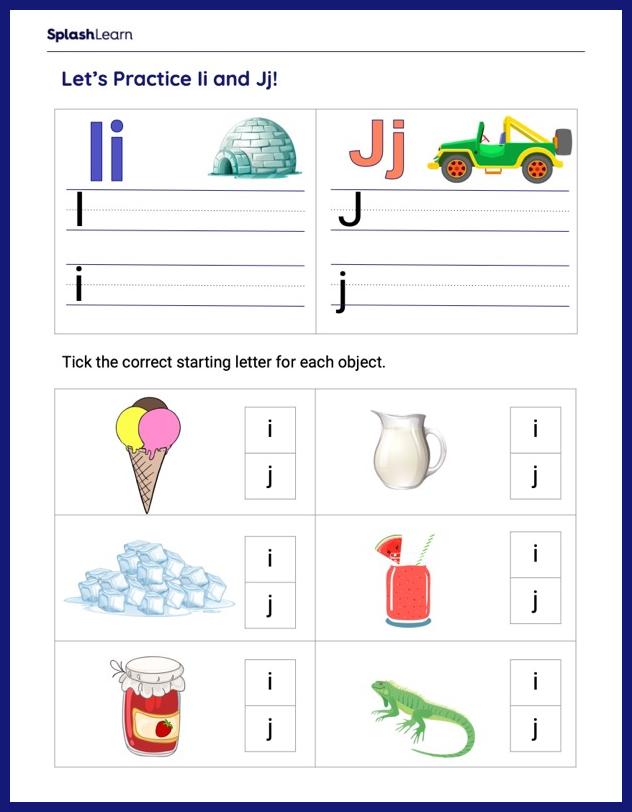
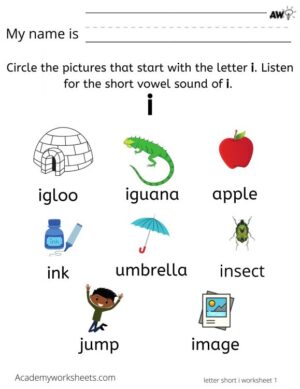
Short term plan
|
Unit: |
Lesson 37 |
||
|
School: |
|
||
|
Teacher’s name: |
|
||
|
Date: |
|
||
|
Grade: 3 |
Number present: |
absent: |
|
|
Lesson title |
Everyday activities |
||
|
Learning objectives |
3.1.4.2 understand simple descriptions of people, actions, and objects with visual support; 3.2.3.1 respond to basic questions with single words or short responses; 3.3.5.1 read short, illustrated fiction and non-fiction stories written in very simple language using a dictionary; 3.5.1.10 use common present simple forms contractions on a limited range of familiar topics. |
||
|
Lesson objectives (assessment criteria) |
Learners will be able to: to learn how to ask questions about activities and speak about them; write familiar words correctly and make sentences with them; to make short dialogues on the topic; to express personal attitude toward a topic discussing a topic. |
||
|
Values and its purpose: |
"Law and Order" Observance of norms and rules of order and justice understand the need |
||
|
Stages/ Time |
Teachers actions |
Students actions |
Assessment |
Resources |
|
Beginning of the lesson 5 min |
Organization moment : 1.Greeting. . (Whale class, Individually) Warm-up Start to write the letters of the alphabet on the board and ask children to continue (up to h). Ask them to say words from the previous phonics lessons that begin with the letters e to h (egg, fig, goat, hat). Lead – In Ask children what words for travel and movement they have learnt so far in this unit. Write their answers on the board (run, fly, walk, ride a bike, ride a scooter). Ask children which of these actions they do every day (probably walk and run) and which actions they do sometimes (perhaps ride a bike, ride a scooter, and maybe - if they have been in an aeroplane - fly). Task. I Ex:1 P:36 Ask children to look at the after-school activities pictures. Play the first part of the recording for children to listen and point to the pictures. Play the second part for children to repeat the phrases. Play the recording all the way through for children to listen and point and then repeat the phrases. |
Learners listen, repeat, and participate in placing flashcards. Learners look at the after-school activities pictures Answers Listen and point. help my mum, do my homework, visit my grandma, go swimming, have a music lesson, watch TV have a music lesson, do my homework, watch TV, go swimming, visit my grandma, watch TV Listen and chant. help my mum, do my homework, visit my grandma, go swimming, have a music lesson, watch TV |
Teacher controles the process, gives feedback and asks additional questions if it’s nessasery. Teacher evaluate pupils with phrases like: “Good job! Well done!” Formative Assessment
Descriptor: - look at pictures - listen and point Total: 2 point
|
|
|
Middle of the lesson Presentation part. 35 min |
Task II Ex: 2 P: 36 Ask children to look at the pictures again. Ask them which after-school activities they can see in the pictures. If you wish, ask children to work in pairs, taking turns to point to the pictures and name the after-school activities. |
Leaners listen to the poem. Answer play football, have a music lesson, visit my grandma, draw, skate |
T’s feedback Descriptor: - listen and point - answer questions about the girl's feelings Total: 2 point |
|
|
|
Task III Ex: 3 P: 36 Tell children that they are going to hear a recording of the text. Play the recording for children to listen and follow silently in their books. Play the recording a second time. Answer any questions they have, then ask comprehension questions, e.g. Does Adil go to the park? Does Alina play tennis? |
Learners listen and follow silently in their books |
T’s feedback Descriptor: - listen a recording of the text - answer the question Total: 2 point |
Worksheet
|
|
|
Task. IV Ex:4 P:36 Write help- helps and do - does on the board. Circle the final -s in helps and -es in does. Explain to children that the verb changes when we refer to he, she or it. Provide and example: He helps his dad on Saturdays. She always does her homework. Underline the verbs in each sentence. |
Learners write help- helps and do - does on the board. Circle the final -s in helps and -es in does. Answer 1 does 2 helps 3 has 4 goes |
T’s feedback Descriptor: - write help- helps and do - does - underline the verbs in each sentence. Total: 2 point |
|
|
End of the lesson 5 min |
Briefly review the colors learned. Ask students: What was your favorite color activity today? Why? |
|
Poster Success
|
|
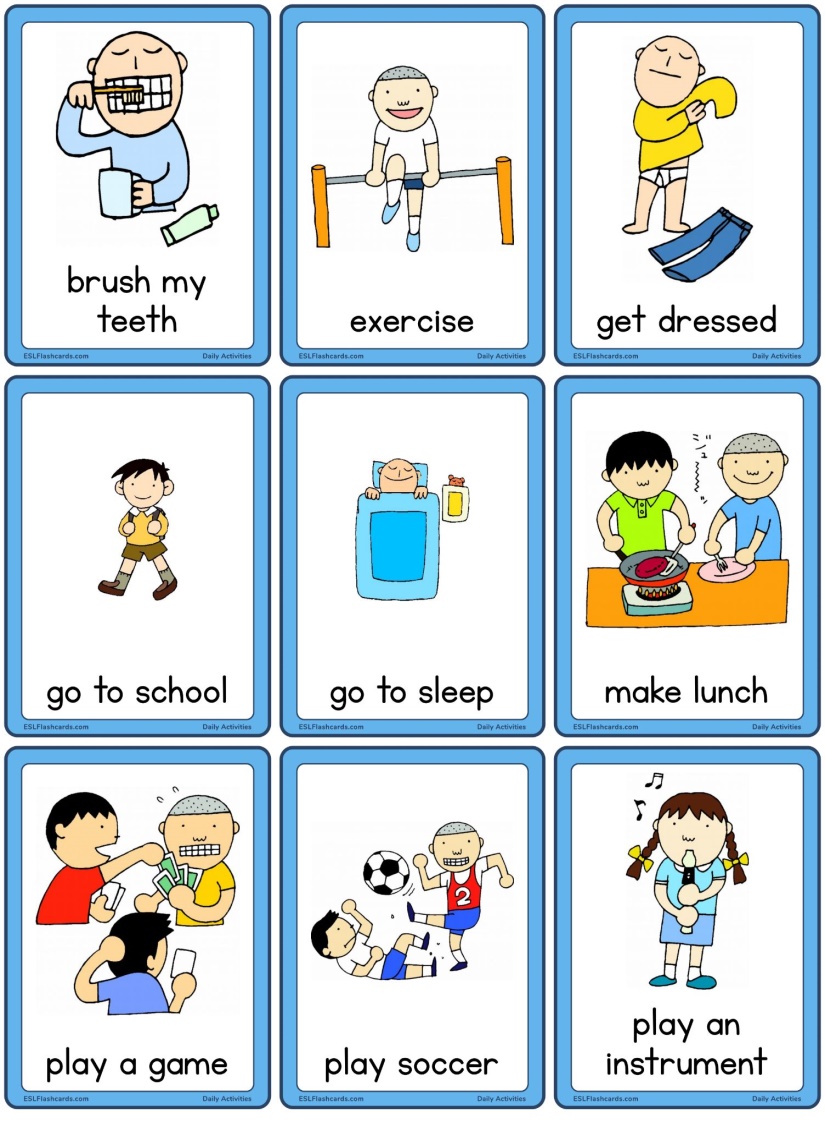
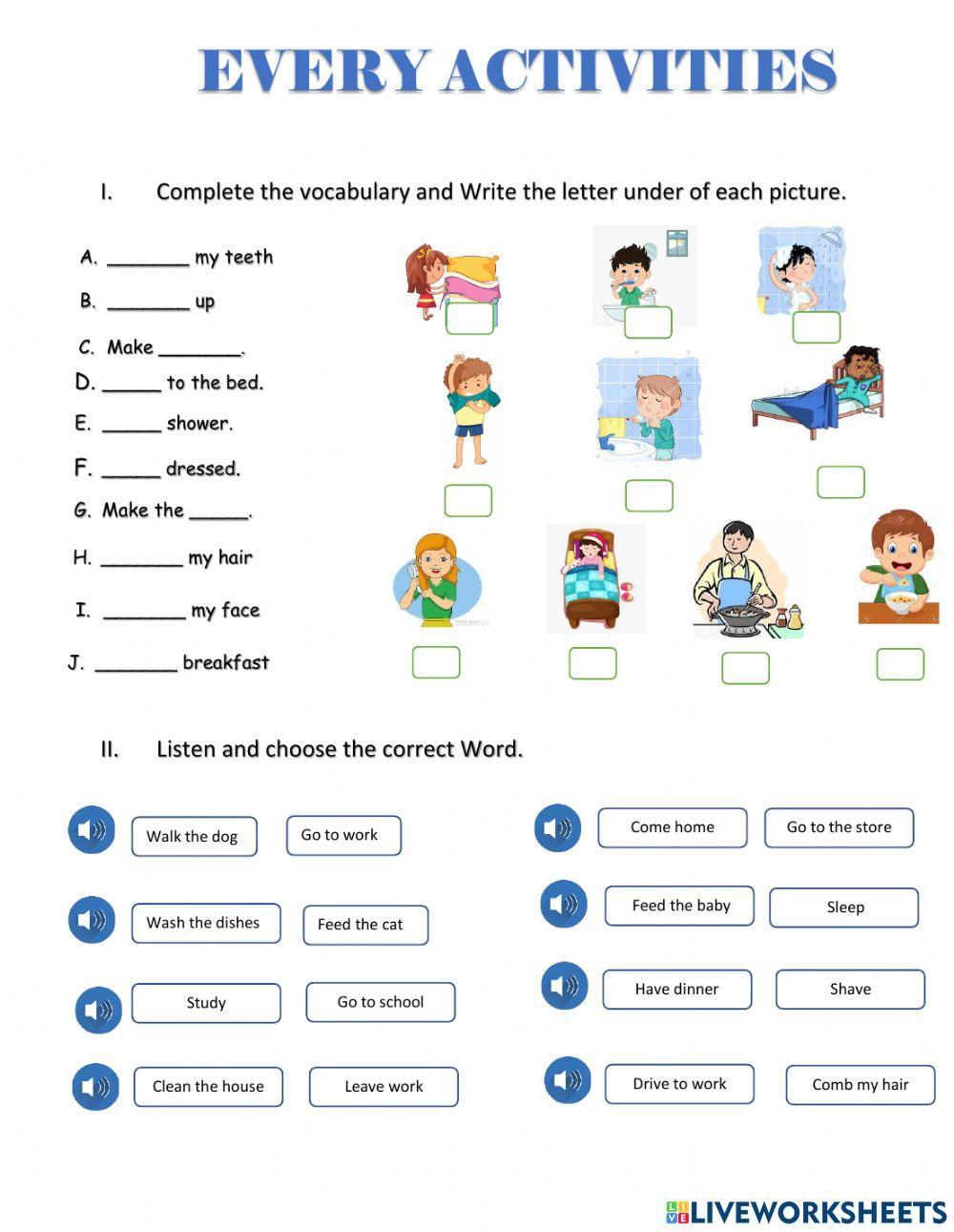
жүктеу мүмкіндігіне ие боласыз
Бұл материал сайт қолданушысы жариялаған. Материалдың ішінде жазылған барлық ақпаратқа жауапкершілікті жариялаған қолданушы жауап береді. Ұстаз тілегі тек ақпаратты таратуға қолдау көрсетеді. Егер материал сіздің авторлық құқығыңызды бұзған болса немесе басқа да себептермен сайттан өшіру керек деп ойласаңыз осында жазыңыз
Family and friends 3-сынып оқулығы бойынша 3-тоқсан ҚМЖ жинағы
Family and friends 3-сынып оқулығы бойынша 3-тоқсан ҚМЖ жинағы
Short term plan
|
Unit: Unit 5. My free time |
Lesson 33 |
||
|
School: |
|
||
|
Teacher’s name: |
|
||
|
Date: |
|
||
|
Grade: 3 |
Number present: |
absent: |
|
|
Lesson title |
A story with action words. |
||
|
Learning objectives |
3.1.2.1 recognise familiar words with visual support; 3.2.2.1 use isolated words and basic expressions to provide personal information; 3.2.3.1 respond to basic questions with single words or short responses; 3.3.1.2 identify and read separate sounds (phonemes) within words, which may be represented by more than one letter; |
||
|
Lesson objectives (assessment criteria) |
Learners will be able to: - learn how to ask questions with can using action verbs; make short dialogues on the topic; express personal attitude toward a topic discussing a topic. |
||
|
Values and its purpose: |
"Law and Order" Know the basics of the legal system and human rights |
||
|
Stages/ Time |
Teachers actions |
Students actions |
Assessment |
Resources |
|
Beginning of the lesson 5 min |
Organization moment : 1.Greeting. . (Whale class, Individually) Warm-up Phonetic Drill Exercise. A teacher asks Sts. to listen to the song and guess the theme of the lesson. What verb can you hear? A teacher shows Sts. a flashcard and asks a question: Can you run? A teacher can use a mime to help children to understand. Active words: run, fly, walk, talk, ride a bike, ride a scooter. Lead – In
|
Greet the teacher and classmates. Introduce themselves in pairs. Sts. listen to the song and name a topic of the lesson. https://youtu.be/YywiAe4kWJ4 Sts. name a verb and make up sentences with a modal verb can. Sts. answer: Yes/ No and give a full sentence. |
Teacher controles the process, gives feedback and asks additional questions if it’s nessasery. Teacher evaluate pupils with phrases like: “Good job! Well done!” Formative Assessment
|
|
|
Middle of the lesson Presentation part. 35 min |
Task. I Ex:1 P:32 Ask children to look at the pictures of the actions. Play the first part of the recording for children to listen and point to the pictures. Play the second part for children to repeat the words Play the recording all the way through again for children to listen and point and then repeat the words. Hold up flashcards 91-96 for individual children to say the words. |
Learners look at the pictures of the actions and listen and point to the pictures. Transcript run, fly, walk, talk, ride a bike, ride a scooter walk, run, ride a scooter, talk, ride a bike, fly Listen and repeat. run, fly, walk, talk, ride a bike, ride a scooter |
T’s feedback Descriptor: - look at the family members - match descriptions to pictures Point 2
|
Free time activity flashcards
|
|
|
Task. II Ex: 2 P: 32 Play the recording for children to listen to the chant. Play it a second time for children to say the words. Repeat. Play Simon says... (see Teacher's Book page 88). Give the instructions (Simon says) run/fly/walk/talk/ride a bike/ ride a scooter for children to mime the actions. |
Learners listen to the chant and say the words. Transcript run, run, run fly, fly, fly walk, walk, walk talk, talk, talk ride a bike, ride a bike, ride a bike ride a scooter, ride a scooter, ride a scoote |
Self -assessment Descriptor: - listen to the chant. - add actions for each family Point 2 |
https://wordwall.net/ru/resource/1624332 |
|
|
Task. III Ex: 3 P: 32 Use Story poster 5 to present the story. Ask questions, e.g. What has Billy got? Focus attention on each frame. Ask children to name as many things as they can. Ask Who's in the living room? Where's Tim/Rosy? What's he/she doing? What's happening? Ask children to look at the poster while you play the recording. Point to each speech bubble as you hear the text. Ask comprehension questions, e.g. Can Action Boy run/ fly/walk/talk? Ask children to open their Pupil's Books and follow the story as you play the recording again. Ask children to find and point to the words from Exercise 1 that appear in the story |
Learners look at the poster while you play the recording. Point to each speech bubble as you hear the text
|
Descriptor: - listen to the recording - answer the question |
Worksheet
|
|
|
||||
|
End of the lesson 5 min |
Briefly ask students what they learned today (greetings, names of characters, introducing themselves). Ex: P: Home task: |
Pupils evaluate themselves using evaluation lists. Reflection. Self- Assessment.
|
Poster Success
|
|

Show a right activity: I can ride a bike, can skate, can play the guitar

Short term plan
|
Unit: 5. My free time |
Lesson 34 |
||
|
School: |
|
||
|
Teacher’s name: |
|
||
|
Date: |
|
||
|
Grade: 3 |
Number present: |
absent: |
|
|
Lesson title |
Talking about ability |
||
|
Learning objectives |
3.1.4.1 understand basic personal questions; 3.2.3.1 respond to basic questions with single words or short responses; 3.3.3.2 find out the main points in short simple descriptions with visual support; 3.5.1.13 use can/ can’t to describe ability. |
||
|
Lesson objectives (assessment criteria) |
Learners will be able to: to learn how to talk about ability; to make short dialogues on the topic; to write familiar words correctly and make sentences with them; to express personal attitude toward a topic discussing a topic. |
||
|
Values and its purpose: |
"Law and Order" Observance of norms and rules of order and justice understand the need |
||
|
Stages/ Time |
Teachers actions |
Students actions |
Assessment |
Resources |
|
Beginning of the lesson 5 min |
Organization moment : 1.Greeting. . (Whale class, Individually) Warm-up Phonetic Drill Exercise. She sells seashells at the seashore. Repeat: sh, she, short, shirt; S, skirt, small, sea. Name words with a sound: sh/ ch Lead – In Hold up Story poster 5 and ask children what happened in the story. Put down the poster and ask children which actions Billy talked about in the story.
|
Learners identify characters and potentially share details from the previous lesson. Sts. do the task in pairs. Answers: Ann can ride a horse. Lily can’t swim. They can climb a tree. My father can drive. My friends can jump. The boys can play football. Tony can’t ride a bike. The dolphins can’t walk. |
Teacher controles the process, gives feedback and asks additional questions if it’s nessasery. Teacher evaluate pupils with phrases like: “Good job! Well done!” Formative Assessment
|
Flashcards
|
|
Middle of the lesson Presentation part. 35 min |
Task. I Ex:1 P: 33 Ask children to look at the story on Pupil's Book page 38. They check how many of the actions they remembered in the lead-in activity. Play the recording, pausing for children to repeat. Divide the class into groups of four to play Billy, Uncle, Tim, and Rosy. Ask children actions for the story (see suggestions the parts of to decide on the below). Children act out the story |
Learners look at the story and check how many of the actions they remembered in the lead-in activity Picture 1: Billy moves Action (Use a pencil or a pencil case for Action Boy.) Uncle waves hello at Action Boy. Picture 2: Billy throws Action Boy in the air. Tim kicks a footpall. Picture 3: Billy moves Action Boy from side to side to make НЕ him walk. Rosy writes with a pen. Picture 4: Rosy talks to Action Boy. Billy laughs. |
Descriptor: - look at the story - check how many of the actions they remembered
|
|
|
|
Task II Ex: 2 P: 33 Look at each picture in the Let's learn! box and ask children what they can see. Copy the sentences and questions from the box onto the board, leaving spaces where the action words are. Put flashcards in the spaces to elicit sentences and questions with the same pattern, e.g. He can swim. He can't fly. Can he climb? Children repeat the sentences chorally. Ask children to look at the pictures in their Pupil's Books. Ask different children to say each sentence. |
Pupils look at each picture in the Let's learn! Copy the sentences and questions from the box onto the board. ANSWERS |
T’s feedback Descriptor: - look at each picture - copy the sentences and questions Total: 1 point
|
|
|
|
Task. III Ex: 3 P: 33 Draw children's attention to the pictures. Read each word aloud for children to repeat chorally. Pair up children. Ask them to close their books. Explain that they will take turns to mime each word for their partner to guess. Do an example with the class e.g. mime putting on knee pads for children to call out the word. |
Learners read each word aloud for children to repeat chorally. |
Self -assessment Descriptor: - read each word aloud - repeat chorally. Point 2 |
https://wordwall.net/ru/resource/3443166 |
|
|
Task. IV Ex: 4 P: 33 Draw children's attention to the Let's learn! box and read the sentences aloud for children to repeat. Write them on the board and underline the verbs wear and don't use. Explain that when we express rules we start the sentence with a verb in the affirmative or negative form to tell us what to do or not to do. Provide more examples, e.g sit down, listen to the teacher, don't talk, don't run. |
Learners read the sentences aloud for children to repeat. Write them on the board and underline the verbs wear and don't use ANSWERS 1 He can ride a bike. 2 He can't fly. 3 He can ride a scooter. 4 She can't talk on the cellphone. |
Descriptor: - read the sentences - underline the verbs wear and don't use Point 2 |
|
|
|
||||
|
End of the lesson 5 min |
Encourage students to practice writing their names and greeting their families in English. |
Pupils evaluate themselves using evaluation lists. Reflection. Self- Assessment.
|
Poster Success
|
|


Short term plan
|
Unit 5. My free time |
Lesson 35 |
||
|
School: |
|
||
|
Teacher’s name: |
|
||
|
Date: |
|
||
|
Grade: 3 |
Number present: |
absent: |
|
|
Lesson title |
Things I can do |
||
|
Learning objectives |
3.1.4.2 understand simple descriptions of people, actions, and objects with visual support; 3.2.2.1 use isolated words and basic expressions to provide personal information; 3.3.3.2 find out the main points in short simple descriptions with visual support; 3.5.1.13 use can/ can’t to describe ability. |
||
|
Lesson objectives (assessment criteria) |
Learners will be able to: to learn how to ask and answer questions with can; to use verbs in the context of a song; to write familiar words correctly and make sentences with them; to express personal attitude toward a topic discussing a topic. |
||
|
Values and its purpose: |
"Law and Order" Ensuring the protection and safety of society understand the importance of law and order as |
||
|
Stages/ Time |
Teachers actions |
Students actions |
Assessment |
Resources |
|
Beginning of the lesson 5 min |
Organization moment : 1.Greeting. . (Whale class, Individually) Warm-up Phonetic Drill Exercise. Repeat: they, the, this, that, there, there is, there are. Read the words: this, that, three, mother Name words with a sound: [d], [f], [ei]. Lead – In
|
Learners work in pairs. One pupil thinks of a free time activity and the other pupil tries to guess the activity. Watch the video and remember and recognize the main vocabulary. |
Teacher controles the process, gives feedback and asks additional questions if it’s nessasery. Teacher evaluate pupils with phrases like: “Good job! Well done!” Formative Assessment |
|
|
Middle of the lesson Presentation part. 35 min |
Task. I Ex: 1 P: 34 Ask children to look at the actions. Play the first recording for children to point to the pictures. part of the Play the second part for children to repeat the words. Play the recording all the way through again for children to listen and point and then repeat. |
Learners look at the actions. Listen and point and then repeat. Transcript Listen and point. write, draw, sing, dance, cook dance, sing, cook, write, draw Listen and repeat. write, draw, sing, dance, cook |
T’s feedback Descriptor: - look at the actions - listen, point, and repeat Total: 1 point |
Flashcards
|
|
|
Task II Ex: 2 P: 34 Ask children to look at the pictures. Point to the different actions for them to name them. Play the song for children to point to the pictures when they hear the new words. Then play it again as they follow the words in their Pupil's Books. Recite the words of the song with the class, without the recording. Say each line and ask children to repeat. Play the song again for children to sing. |
Learners look at the pictures. Point to the different actions for them to name them.
|
T’s feedback Self assessment Descriptor: - look at the pictures - name the actions Total: 1 point
|
|
|
|
Task. III Ex:3 P:34 Ask children to look at the pictures and decide what the actions are (see suggestions below). Practise the actions with the class. Play the song for children to sing and do the actions. Write these lines from the song on the board: I can write... I can draw... I can sing Ask children to think of different endings for these lines. Play the song again. Children sing their new version of the song. |
Pupils look at the pictures and decide what the actions are Song actions I can write: Write the letter 'a' in the air. I can draw an elephant: Draw an elephant's trunk. I can sing this song: Point to mouth. I can do anything: Outstretch arms |
Self -assessment Descriptor: - look at the pictures - sing and do the actions. Total: 1 point
|
Worksheets
|
|
|
||||
|
End of the lesson 5 min |
Briefly ask students what they learned about emotions today. |
Pupils evaluate themselves using evaluation lists. Reflection. Self- Assessment.
|
Poster Success
|
|


Short term plan
|
Unit: 5. My free time |
Lesson 36 |
||
|
School: |
|
||
|
Teacher’s name: |
|
||
|
Date: |
|
||
|
Grade: 3 |
Number present: |
absent: |
|
|
Lesson title |
Phonics |
||
|
Learning objectives |
3.1.1.1 recognise the sounds of phonemes and phoneme blends in words; 3.2.3.3 make introductions and requests in basic interaction with others; 3.3.2.1 identify some familiar words and signs on illustrations /pictures in common everyday situations; 3.4.2.1. follow word order rules in short statements. |
||
|
Lesson objectives (assessment criteria) |
Learners will be able to: to learn how to pronounce the words correctly; to make short dialogues on the topic; to write familiar words correctly and make sentences with them; to express personal attitude toward a topic discussing a topic. |
||
|
Values and its purpose: |
"Law and Order" Know the basics of the legal system and human rights |
||
|
Stages/ Time |
Teachers actions |
Students actions |
Assessment |
Resources |
|
Beginning of the lesson 5 min |
Organization moment : 1.Greeting. . (Whale class, Individually) Warm-up Start to write the letters of the alphabet on the board and ask children to continue (up to h). Ask them to say words from the previous phonics lessons that begin with the letters e to h (egg, fig, goat, hat). Lead – In Write li, Jj, Kk, LI on the board. Point to each one and say the letter name and the sound for both upper- and lower-case letters for children to repeat and draw the letters in the air. Below the letters, write the corresponding words ink, jam, kite, lion. Circle the first letter of each word. Point to the words and say the beginning sound for children to repeat.
|
Students repeat letter names, sounds, and words after the teacher. Students draw letters in the air. Students repeat words on phonics cards. Students identify the beginning sound of each word. |
Teacher controles the process, gives feedback and asks additional questions if it’s nessasery. Teacher evaluate pupils with phrases like: “Good job! Well done!” Formative Assessment
|
|
|
Middle of the lesson Presentation part. 35 min |
Task. I Ex:1 P:35 Ask children to look at the letters. Play the first part of the recording for children to listen and point to the letters. Play the second part for children to repeat the letter names, sounds, and words. Play the recording a final time for individual children to say the sounds and words for the class. |
Learners listen and point to the letters. Students listen and repeat letter names, sounds, and words. Transcript Listen and point. Letter 1/1/ink, Letter J/dz/jam, Letter K/k/ kite, Letter L/1/lion Listen and repeat. Letter 1/1/ink, Letter J/d3/jam, Letter K/k/kite, Letter L.//lion |
T’s feedback Descriptor: - look at the letters - listen and repeat letter names Total: 2 point
|
|
|
|
Task II Ex: 2 P: 35 Play the recording for children to listen to the chant. Put phonics cards 9-12 around the room. Play the chant again for children to point to the cards as they hear the words. Play the chant once more, pausing for children to repeat. Repeat, and ask children to follow in their Pupil's Books. |
Learners listen, point to cards, and repeat the chant. |
T’s feedback Descriptor: - listen to the chant. - use a and an Total: 2 point
|
Worksheet
|
|
|
Task. III Ex:3 P:35 Elicit the three images (lion, jam, ink). Ask What has the lion got? Tell children they can find out the answer by listening. Play the recording for children to join the letters. Repeat. Ask What has the lion got? (jam). Then elicit the sounds children heard, and write them on the board. |
|
T’s feedback Descriptor: - listen, follow the sounds - discuss the answer Total: 2 point |
https://wordwall.net/ru/resource/23348579 |
|
|
Task. IV Ex: 4 P: 35 Ask children to look at the pictures and tell you what they can see. Read the text aloud for children to follow. Write the first line on the board. Check that children understand the meaning of The lion's got ... (remind them of the phrase I've got...). Explain the meaning of some, and tell children that it is used instead of a before 'uncountable' items such as liquids (e.g. ink and jam). |
Learners listen, follow the reading, and circle letters. ANSWERS The Dion's got some jam. The lion's got someink. Look! Here is akite. Oops! The Dion is a mess. |
Descriptor: - find and circle letters - listen, follow the reading Total: 2 point |
|
|
End of the lesson 5 min |
Ask students what they learned today. Briefly review greetings and numbers 1-20. |
|
Poster Success
|
|


Short term plan
|
Unit: |
Lesson 37 |
||
|
School: |
|
||
|
Teacher’s name: |
|
||
|
Date: |
|
||
|
Grade: 3 |
Number present: |
absent: |
|
|
Lesson title |
Everyday activities |
||
|
Learning objectives |
3.1.4.2 understand simple descriptions of people, actions, and objects with visual support; 3.2.3.1 respond to basic questions with single words or short responses; 3.3.5.1 read short, illustrated fiction and non-fiction stories written in very simple language using a dictionary; 3.5.1.10 use common present simple forms contractions on a limited range of familiar topics. |
||
|
Lesson objectives (assessment criteria) |
Learners will be able to: to learn how to ask questions about activities and speak about them; write familiar words correctly and make sentences with them; to make short dialogues on the topic; to express personal attitude toward a topic discussing a topic. |
||
|
Values and its purpose: |
"Law and Order" Observance of norms and rules of order and justice understand the need |
||
|
Stages/ Time |
Teachers actions |
Students actions |
Assessment |
Resources |
|
Beginning of the lesson 5 min |
Organization moment : 1.Greeting. . (Whale class, Individually) Warm-up Start to write the letters of the alphabet on the board and ask children to continue (up to h). Ask them to say words from the previous phonics lessons that begin with the letters e to h (egg, fig, goat, hat). Lead – In Ask children what words for travel and movement they have learnt so far in this unit. Write their answers on the board (run, fly, walk, ride a bike, ride a scooter). Ask children which of these actions they do every day (probably walk and run) and which actions they do sometimes (perhaps ride a bike, ride a scooter, and maybe - if they have been in an aeroplane - fly). Task. I Ex:1 P:36 Ask children to look at the after-school activities pictures. Play the first part of the recording for children to listen and point to the pictures. Play the second part for children to repeat the phrases. Play the recording all the way through for children to listen and point and then repeat the phrases. |
Learners listen, repeat, and participate in placing flashcards. Learners look at the after-school activities pictures Answers Listen and point. help my mum, do my homework, visit my grandma, go swimming, have a music lesson, watch TV have a music lesson, do my homework, watch TV, go swimming, visit my grandma, watch TV Listen and chant. help my mum, do my homework, visit my grandma, go swimming, have a music lesson, watch TV |
Teacher controles the process, gives feedback and asks additional questions if it’s nessasery. Teacher evaluate pupils with phrases like: “Good job! Well done!” Formative Assessment
Descriptor: - look at pictures - listen and point Total: 2 point
|
|
|
Middle of the lesson Presentation part. 35 min |
Task II Ex: 2 P: 36 Ask children to look at the pictures again. Ask them which after-school activities they can see in the pictures. If you wish, ask children to work in pairs, taking turns to point to the pictures and name the after-school activities. |
Leaners listen to the poem. Answer play football, have a music lesson, visit my grandma, draw, skate |
T’s feedback Descriptor: - listen and point - answer questions about the girl's feelings Total: 2 point |
|
|
|
Task III Ex: 3 P: 36 Tell children that they are going to hear a recording of the text. Play the recording for children to listen and follow silently in their books. Play the recording a second time. Answer any questions they have, then ask comprehension questions, e.g. Does Adil go to the park? Does Alina play tennis? |
Learners listen and follow silently in their books |
T’s feedback Descriptor: - listen a recording of the text - answer the question Total: 2 point |
Worksheet
|
|
|
Task. IV Ex:4 P:36 Write help- helps and do - does on the board. Circle the final -s in helps and -es in does. Explain to children that the verb changes when we refer to he, she or it. Provide and example: He helps his dad on Saturdays. She always does her homework. Underline the verbs in each sentence. |
Learners write help- helps and do - does on the board. Circle the final -s in helps and -es in does. Answer 1 does 2 helps 3 has 4 goes |
T’s feedback Descriptor: - write help- helps and do - does - underline the verbs in each sentence. Total: 2 point |
|
|
End of the lesson 5 min |
Briefly review the colors learned. Ask students: What was your favorite color activity today? Why? |
|
Poster Success
|
|



шағым қалдыра аласыз



